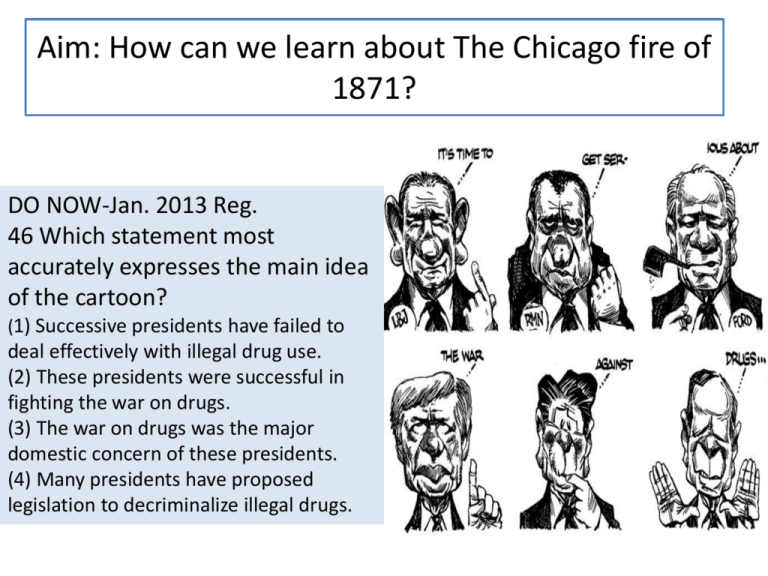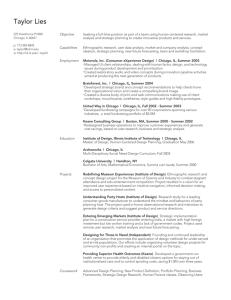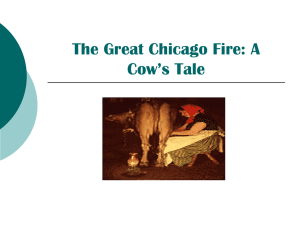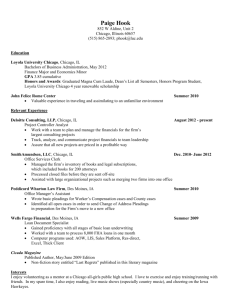THE GREAT CHICAGO FIRE
advertisement

Aim: How can we learn about The Chicago fire of 1871? DO NOW-Jan. 2013 Reg. 46 Which statement most accurately expresses the main idea of the cartoon? (1) Successive presidents have failed to deal effectively with illegal drug use. (2) These presidents were successful in fighting the war on drugs. (3) The war on drugs was the major domestic concern of these presidents. (4) Many presidents have proposed legislation to decriminalize illegal drugs. In stating the principle of a "clear and present danger" in Schenck v. United States, the Supreme Court established that 1. constitutional rights are not absolute 2. the Constitution guarantees the right to privacy 3. Congress can pass a law to eliminate any part of the Bill of Rights 4. all individual rights are eliminated during wartime The authors of the Articles of Confederation established a decentralized political system mainly to 1. cancel state debts incurred during the Revolutionary War 2. assist the southern states in their efforts to gain a manufacturing base 3. promote the common goal of national sovereignty 4. prevent the abuses of power that had existed under British rule THE GREAT CHICAGO FIRE Rachell Rosario In October 1871, dry weather and an abundance of wooden buildings, streets and sidewalks made Chicago vulnerable to fire. The night of October 8, in or around a barn located on the property of Patrick and Catherine O'Leary at 137 DeKoven Street on the city’s southwest side, the fire started. Legend holds that the blaze started when the family's cow knocked over a lighted lantern; however, Catherine O’Leary denied this charge, and the true cause of the fire has never been determined. What is known is that the fire quickly grew out of control and moved rapidly north and east toward the city center. Here are some facts: • Many of the houses in Chicago at that time were made of wood and poorly constructed. • The surrounding sidewalks and roads were made of wood as well. • The rainfall that summer in the city was scant. For three weeks leading up to October 8, absolutely no rain fell in Chicago. • Winds on the night of October 8 were gusting up to 30 mph. So, by the time the exhausted fire department arrived on the scene, the fire was well and truly out of control. Among the Ruins of Chicago, 1871. (photo by G.N. Barnard)-Image of actual picture. The Rush of Refugees through the Potter's Field toward Lincoln Park, 1871 (Harper's Weekly, from a sketch by Theodore R. Davis) Video. http://vimeo.com/2289117 Quick fact The month after the fire, Joseph Medill(1823-99) was elected mayor after promising to institute stricter building and fire codes, a pledge that may have helped him win the office. His victory might also be attributable to the fact that most of the city's voting records were destroyed in the fire, so it was next to impossible to keep people from voting more than once. Creative Destruction What the advancing inferno did not destroy, it still irreversibly changed. These artifacts demonstrate the fire's ability to take the simplest things and fuse them into strikingly appealing aesthetic objects. Clockwise, from the left, glass marbles (1919.9), screws, washers, and files. Artifacts pictures to show* Aftermath • Residents fled their homes, carrying cherished or sometimes strange possessions, huddling on the shores of Lake Michigan and watching some of the city's most famous buildings go up in smoke. Overnight, 17,000 buildings were destroyed. A total of 300 people died, and a full one-third of the city's nearly 300,000 residents lost their homes. Damage estimates topped $200 million. • Ironically, the one thing that helped stopped the fire more than anything else was a rainstorm the following day. • The resulting chaos convinced city leaders to ask for federal help, and President Ulysses S. Grant responded by sending in six companies of federal troops, under the command of Civil War General Phillip Sheridan. • Federal aid and other help poured in, and the city began to rebuild itself, in the process building some of the country's most iconic buildings. Today Fire Prevention Week (This year it is between October 8th and October 14th. Third Star? The fire inspired the name of a Major League Soccer (MLS) team based in Chicago: --The Chicago Fire. In 1956, the Chicago Fire Academy was built on the site where Mr. and Mrs. O'Leary's barn once stood. The school trains new firefighters to this day. “In the midst of a calamity without parallel in the world’s history, looking upon the ashes of thirty years’ accomplishments, the people of this once beautiful city have resolved that CHICAGO SHALL RISE AGAIN!” -Tribune Bibliography 1. "Introduction to The Great Chicago Fire." Wall of Flame RSS. N.p., n.d. Web. 29 May 2013. 2. "History Files - Chicago Fire." History Files - Chicago Fire. N.p., n.d. Web. 29 May 2013 3. "Chicago Fire of 1871." History.com. A&E Television Networks, n.d. Web. 29 May 2013. 4. "The Great Chicago Fire of 1871." The Great Chicago Fire of 1871. N.p., n.d. Web. 29 May 2013.






